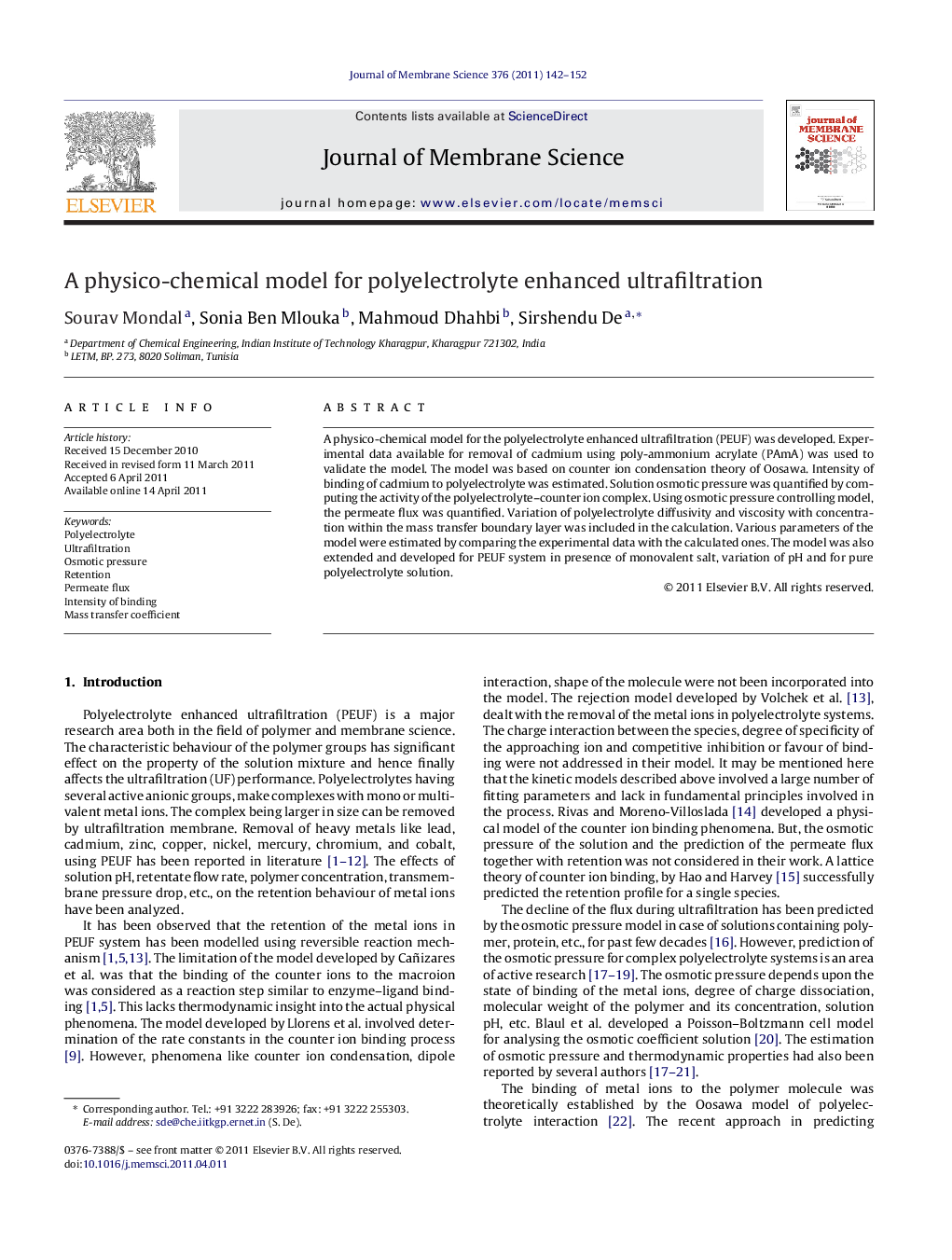| Article ID | Journal | Published Year | Pages | File Type |
|---|---|---|---|---|
| 635720 | Journal of Membrane Science | 2011 | 11 Pages |
A physico-chemical model for the polyelectrolyte enhanced ultrafiltration (PEUF) was developed. Experimental data available for removal of cadmium using poly-ammonium acrylate (PAmA) was used to validate the model. The model was based on counter ion condensation theory of Oosawa. Intensity of binding of cadmium to polyelectrolyte was estimated. Solution osmotic pressure was quantified by computing the activity of the polyelectrolyte–counter ion complex. Using osmotic pressure controlling model, the permeate flux was quantified. Variation of polyelectrolyte diffusivity and viscosity with concentration within the mass transfer boundary layer was included in the calculation. Various parameters of the model were estimated by comparing the experimental data with the calculated ones. The model was also extended and developed for PEUF system in presence of monovalent salt, variation of pH and for pure polyelectrolyte solution.
Graphical abstractThe distribution of the rod like polyelectrolytes and the counter ions over the membrane surface is illustrated. The mass transfer boundary layer grows over the membrane due to the deposition of the polyelectrolyte–counter ion complex.Figure optionsDownload full-size imageDownload high-quality image (324 K)Download as PowerPoint slideHighlights► A combined model has been proposed for predicting retention of a 2:1 electrolyte using Oosawa's counter ion condensation theory. ► The flux prediction in polyelectrolyte enhanced ultrafiltration has been estimated following osmotic pressure model. ► The analysis has been formulated for various effects of mixed salt, polyelectrolyte concentration, pH, etc.
